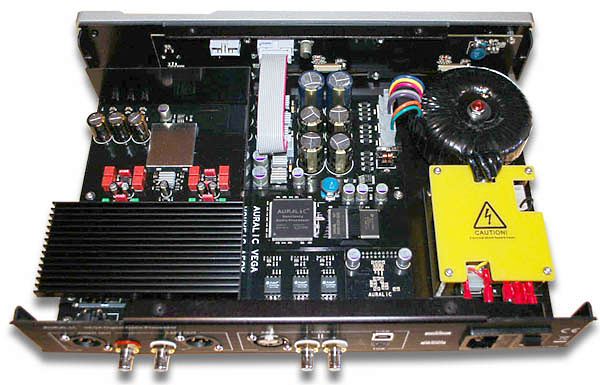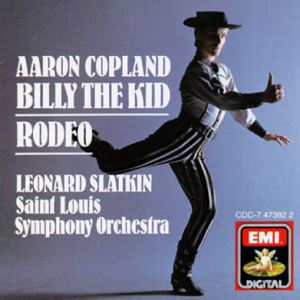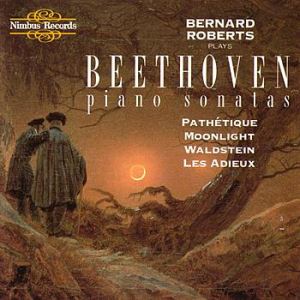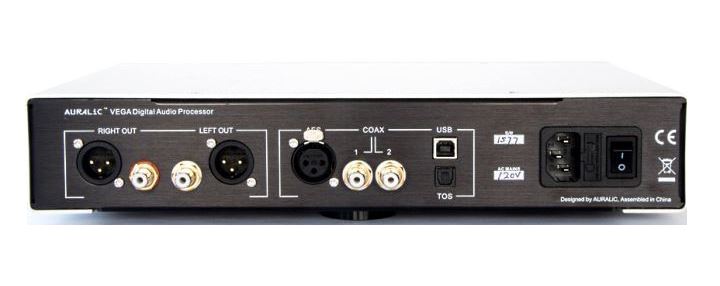
Based in Vancouver, Washington and Beijing, China, AURALiC is a relative newcomer to the high-end audio arena. The company was co-founded by Xuanqian Wang and Yuan Wang (unrelated), who met in 2008 Festival of Waldbühne Berlin, an outdoor festival of music and film. Xuanquian Wang, an accomplished pianist, was trained as a professional engineer, both in electronics and recording, and had been involved in digital electronics design and music recording. Yuan Wang, though trained in sociology and management science, had been involved in precision instrument manufacturing. Through shared interests in music and the pursuit of superior sound quality, they formed AURALiC to design and manufacture high-end audiophile products. They have been quite active since their inception, having introduced the well-received TAURUS headphone amplifier, TAURUS PRE linestage preamplifier, MERAK monoblock amplifiers, and ARK MX+ 32-bit/192kHz DAC.
The AURALiC VEGA ($3495), their latest entry, which succeeds by a large margin its predecessor ARK MX+, is a demure box, measuring just 11” wide, by 9” deep and 2.5” high, and weighing in at a satisfying 7.5 pounds. That’s roughly one-third the size and weight of my dCS Debussy, which is svelte, but the standard 17.5” in width. In addition to being demure, it is attractive with its brushed aluminum casework, just a shade lighter than that of the Mac Mini, MacBook Pro and iMac. The elegant front panel contains only a large 512×64 OLED screen, a power indicator, and a volume control. Yes, OLED. It is simply the best display I have seen on a component. It does not have the bright glare of standard LEDs or even the currently popular touchscreens; rather, it is exceedingly high resolution and softly glowing. The information it displays looks almost as if it is printed on glass. The volume control can also be depressed for access to and navigation around the System Menu without having to resort to the remote, which is a generic, but serviceable, affair. A dedicated remote would be a nice option.
The real panel is likewise a model of simplicity. It contains both balanced and unbalanced analog outputs, digital inputs for AES/EBU, two coaxial S/PDIF, TOSLINK, and USB, and an IEC power inlet with integrated fuse holder and power switch. The AES/EBU, S/PDIF, and TOSLINK inputs are limited to 192kHz. The proprietary active buffered USB input is where the action is, accepting sampling frequencies up to 32-bit/384kHz, along with both DSD64 and DSD128. In other words, it can play anything currently available, and likely to be available anytime in the future.

If the outside of the VEGA is understated, the interior is bristling with custom silicon, beginning with the proprietary AURALiC Sanctuary multi-core ARM processor which operates at 32-bits and a sampling rate of 1.5MHz, and is capable of 1000 million (that’s a billion) instruction per second (MIPS). That is more computing power than is available to my Meridian G68ADV surround sound processor, and the VEGA is only handling two channels, and is not required to decode multiple multi-channel audio formats or provide bass management and room correction. The Sanctuary is responsible for USB buffering, upsampling, and digital reconstruction, replacing many of the internal functions of the ESS Sabre 9018 DAC with custom solutions. Given that all PCM is upsampled to 1.5MHz, you may want to disengage upsampling in your playback software. The Femto Master Clock is based on an aerospace grade crystal oscillator which reduces jitter to an astonishingly low 82 femtoseconds (0.082 picoseconds), which is at least two orders of magnitude lower than traditional clocking systems. On the other side of the equation is the patented ORFEO Class A analog output module (as used in AURALiC’s TAURUS PRE preamplifier), two of which are employed in the VEGA (hiding under the heatsink in the bottom left of the photo above) in dual balanced mode.
Speaking of digital reconstruction filters, the VEGA offers six modes, four for PCM and two for DSD. With the exception of Mode 1, all PCM modes contain separately optimized filters for each sampling rate, which AURALiC refers too as Flexible Filter Technology. The filters were developed by relying on both objective measurement and subjective listening tests. Mode 1 is a linear phase filter which provides the best measured performance, with flat frequency response and sharp stop-band attenuation. Mode 2 is also a linear phase filter with flat frequency response, but gentler stop-band attenuation, which results in some roll-off in the treble at the lower sampling rates. Mode 3 is a minimum phase or apodizing filter, which minimizes both pre-ringing and post-ringing, also resulting in a gentle treble roll-off at the lower sampling rates. Mode 4 is an alternate minimum phase design which has been optimized for what the designers believe to be the best subjective listening experience. Modes 5 and 6 apply to DSD playback. Each rolls off the ultrasonic noise endemic to the DSD process at different corner frequencies, with Mode 6 following the Scarlet Book standard for SACD players of -3db at 50kHz. As with the Bricasti M1 DAC, which I reviewed here, each filter has its own characteristic sound, and some experimentation is required to determine which best suits your ear and current music selection. This is easily handled from the remote. Choice in filter selection is a good thing; it allows you to tailor the DAC to your preferences. For those technically minded, more information about AURALiC’s filter design can be found here.
A quick word about the System Menu. In addition to allowing filter selection, you can select input, phase, balance, display brightness, sleep, volume selection, and clock performance. The most interesting relates to the clock. Here warm-up is essential. It takes about an hour for the clock to achieve thermal stability, which is when both its accuracy and jitter rejection are at their peak. Warm-up is not really a “green” issue, since the VEGA only draws two watts in standby, during which time the clock circuit and analog stage are engaged. Simply leave the VEGA on as I did. It’s not anything like the energy drain associated with a one hour warm-up for large Class A monoblock amplifiers, e.g., my reference Pass Labs XA100.5s, which are spinning the electric meter all the while at 300 watts each. An alternative is to select Sleep mode, which keeps power to the clock circuits on at all times.
There are four clock settings: Auto, Course, Fine and Exact. As its name implies, Auto optimizes the clock setting based on its ability to maintain lock stability on the chosen digital input. In the unlikely event you experience dropouts with Auto, you may want to select the Course setting. Choosing Fine ups the ante, with greater precision at the expense of sensitivity to jitter at the input. Likewise, Exact ratchets up precision – and sound quality – at the expense of lock stability for high jitter sources. Users are warned that they may experience dropouts using the Exact setting on the USB input if the computer has not been optimized for music playback. For testing purposes, I engaged the Exact setting and never experienced any problems using either my computer audio system through the VEGA’s USB input (at any sample rate, including 352.8kHz and DSD128) or my CD player through one of its coaxial S/PDIF inputs, though simply leaving it on Auto may be the best approach.
The question arises whether you can use the VEGA without a preamp. Based on my experience, this can be easily answered: maybe. The volume control, though engaged with a tradition rotating knob on the front panel, is implemented entirely in the digital domain. AURALiC uses 32-bit internal processing, so it can attenuate volume up to a point without affecting resolution. AURALiC states that you should not be able to detect any difference in sound quality between volume levels 80-100; between 40-80 should be fine for everyday listening; and below 40, some degradation will be detectable. With my system, I typically listened between 75-85 and could not hear any compromise. Below 75 was background listening, with volume low enough that it really made little difference; and below 40 I could not hear much of anything so the issue was moot. However, if you have a sensitive amplifier and sensitive speakers, you may routinely be listening at levels well below 80, in which case a preamplifier may serve you well, by running the VEGA flat out and handling attenuation in the analog domain. With my system, I found on a few selections, particularly those mastered before the onset of the loudness wars, that I listened at a volume setting of 100, and wouldn’t have minded turning it up a bit. In a similar system, you may want the additional gain provided by an active preamplifier. In short, don’t sell your preamplifier until you have determined that the sensitivity of your system falls within the sweet spot of the VEGA’s analog output.
Listening
During the course of the review, I attended the symphony and, among other selections, heard Aaron Copland’s Billy the Kid ballet score. To digress for a moment, there are some audiophiles with dedicated listening rooms, large speakers, and expensive components who believe they can accurately reproduce the sound of a live orchestra in its original performance space at home. I have heard some of these systems, including spending countless hours in the Ralston Listening Room, and while playback is remarkable, I can assure you that, God love them, they are deluding themselves, which is understandable given their level of investment. However, we are simply not at a stage where a hi-fi system, no matter how elaborate, can replicate the sound of a full symphony orchestra performing in, in my case, a 700,000 cubic foot symphony hall. Just ain’t happening. Chamber music and small jazz ensembles, perhaps. That is not to say that hi-fi systems are not able to achieve in large measure a suspension of disbelief, and provide a great deal of pleasure, but it is an entirely different experience, one we should rejoice in, but not confuse with the real thing.

Aaron Copand is unarguably the greatest, and most quintessential, American composer. What he achieves in his music, in addition to the incorporation of traditional folk melodies, is the re-creation of the vastness of space of the American continent, and the expansiveness of the American spirit. All of his music is reaffirming, and therefore optimistic, and leaves the listener with a swell in his heart. No mean trick in an era of cynicism and despair. While perhaps his most famous work is Appalachian Spring, with its incorporation of the Quaker hymn Simple Gifts, his Billy the Kid from 1938 excels at capturing the spirit of the pioneering West. Recommended versions include Antal Dorati and the Minneapolis Symphony on Mercury Living Presence, and Leonard Slatkin and the St. Louis Symphony on EMI.
From the opening notes of the oboe, limpid and floating in space, then doubled by the woodwinds, and augmented by the horns and rumbling tympani, the dawn of the great plains unfolds before the listener, and sets the stage for the drama to follow. Massed strings, punctuated by the metallic sheen of crashing cymbals and adorned by the crystaline sound of bells, fill in the sound landscape. The most exciting movement is Gun Battle for its potpourri of percussion, providing a warehouse full of effects, all of which constitute the most demanding test of transient response in the classical repertoire I am aware of. The AURALiC VEGA handles this with aplomb, simultaneously reproducing the macro dynamics of the thunderous bass impact of the large kettle drum and the instantaneous snap of the wooden blocks, and sorting out the density of the sonic fabric with ease. Capturing faithfully at the same time the unique timbre of these instruments, the VEGA demonstrates its accuracy at all levels.

Changing genres, we move to the Baroque period, to evaluate string tone in Bach’s achingly beautiful Chaconne from the last movement of the second Partita for Violin in D minor, BWV 1004, here performed by Isabelle Faust on Harmonia Mundi. This is solo work at its finest, with the violinist alone on stage to wrestle with the music. A chaconne is a dance, which Bach explores in 64 variations, first in D minor, then in D major, and finally returning to D minor, spanning approximately 15 spellbinding minutes. The hall is relatively small, which renders the performance intimate. The miking is at a moderate distance, and thus captures all of the ambiance cues of the venue, giving the recording an exceptionally live feel. The music, replete with double and triple stops, and arpeggiated chords, requires not only virtuosity, but a deep understanding of harmony and tempi, to capture all of the inherent emotion of the piece. String tone is both clear and liquid, in turn capturing the staccato and lagato nature of the individual notes, ever maintaining the forward motion. The timbre of the violin is rich and resonant, without giving up any incisiveness. There is a complete lack of any edginess, despite great clarity. Some might wish for a bit more flesh on the bones, but to do so the VEGA would have to give up its characteristic neutrality. The reproduction is such that no listener fatigue is introduced, even over lengthy listening sessions of audibly challenging material.

Moving to solo piano, I put on Bernard Roberts’ performance of Beethoven’s Piano Sonata No. 8 in C minor, Op. 13, “Pathetique” on Nimbus. Nimbus (now defunct though some of its recordings are reissued on the economy Brilliant label) is unique in that they issued all their recordings using Peter Fellgett and Michael Gerzon’s two-channel–compatible, matrixed UHJ Ambisonic surround system, using multi-capsule Calrec Soundfield microphones. To my knowledge, Meridian is the only current manufacturer who supports this format. Multi-channel playback is quite compelling. When listening in two channel, however, the recordings tend to be somewhat dry with a surprisingly close presentation - a first row perspective which can result in an exciting performance. Roberts plays in a percussive style with restrained use of the sustaining pedal, which emphasizes individual notes at the expense of harmonics. Nevertheless, the hammers strike softly giving notes an attractive, somewhat thicker, rounded quality, with less ringing. The AURALiC VEGA, which at times can sound delicate, is the perfect foil for this playing style, and results in a very articulate - and pleasing - sound, bringing more of an intellectual rather than emotional approach to the listening experience.
Conclusion
The AURALiC VEGA is a knockout product, both in terms of its capabilities and its sound quality. Handling up to 32-bit/384kHz and DSD128, it has all the bases covered for the foreseeable future and beyond. Aesthetics and fit’n'finish are exemplary, and the user interface is elegantly intuitive. The sound of the VEGA, to the extent there is one, is as clean, smooth and balanced as you could possibly hope for, with extraordinary detail and dynamics. I can’t think of another DAC in this price range that is as accomplished. AURALiC has hit a whooper of a home run with the VEGA. The only thing missing is a headphone jack, but there is AURALiC’s versatile TAURUS MkII balanced headphone amplifier in the same form factor, which could easily be slid underneath for the complete package.
- Frank Berryman
Specifications
• Frequency Response: 20 - 20KHz, +/- 0.1dB*
• THD+N: <0.00015%, 20Hz-20KHz at 0dBFS
• Dynamic Range: 130dB, 20Hz-20KHz, A-weighted
• Digital Inputs: 1 AES/EBU, 2 Coaxial, 1 Toslink, 1 USB 2.0 buffered by ActiveUSB
• Analog Outputs: 1 Balanced XLR(output impedance 4.7ohm), Single-ended RCA(output impedance 50ohm)
• Digital Formats: PCM from 44.1KS/s to 384KS/s in 32Bit**, DSD64(2.8224MHz) and DSD128(5.6448MHz)***
• Output Voltage: 4Vrms at Max. with dynamic-loss-free digital volume
• User Interface: AURALiC RC-1 remote control, 512*64 pixels OLED Display
• Power Consumption: Standby: <2W, Sleep: <10W, Playback: 15W at max.
• Dimensions: 11''W x 9''D x 2.6''H (33cm x 23cm x 6.5cm)
• Weight: 7.5 pounds (3.4kg)
* Tested under Filter Mode #1 for all sampling rates
** 352.8KS/s and 384KS/s are supported though USB only
** 32bit is supported though USB only
*** By ‘DoP V1.1′ protocol though USB only
Contact
AURALiC AMERICAS, Inc.
12208 NE 104th Street
Vancouver, Washington 98682
Telephone: (360) 326-8879
www.auralic.com
[email protected]
Associated Equipment
Analog Source: VPI Scout; Dynavector 20X2; Musical Surroundings Phonomena II
Digital Sources: Meridian G08; Mac Mini; dCS Debussy; Audirvana Plus
Preamplifier: Meridian G02
Power Amplifiers: Pass Labs XA100.5
Loudspeakers: Magnepan 1.7
Analog Cables: Kimber Select KS1016 and KS1116
Digital Cables: Kimber Select KS2020 and KS2416 USB
Speaker Cables: Kimber Select KS6063 and KS9033
Power Cables: Kimber PK10G and PK14G
Headphones: Audeze LCD-X; Etymotic ER-4S
Accessories: Audience aR2p power conditioner



